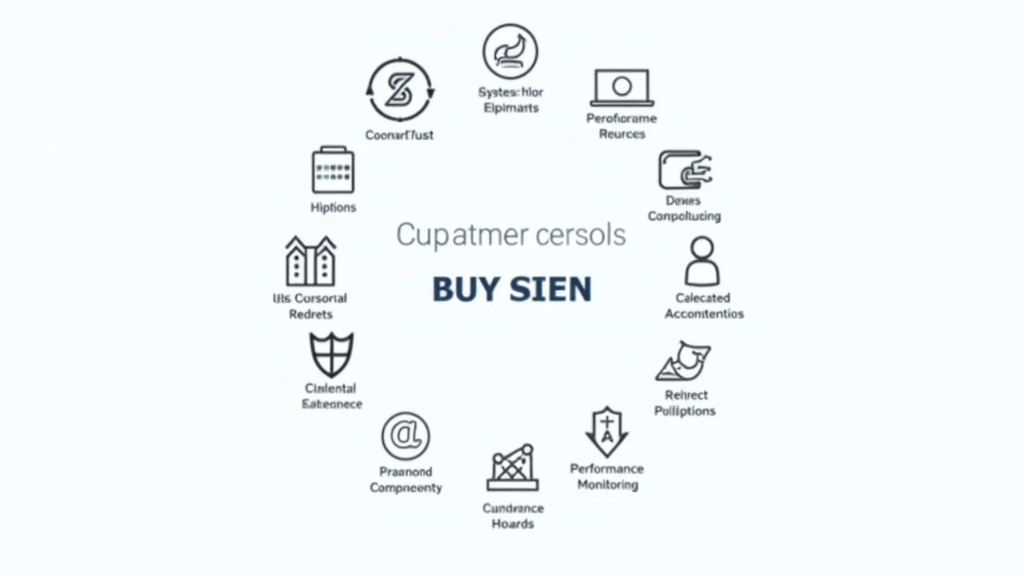Essential SEO Migration Checklist for Successful Marketing Strategies
Introduction
Understanding the Importance of SEO Migration
SEO migration is a crucial process that involves transferring your website to a new domain, platform, or structure while maintaining its search engine visibility. A successful migration can enhance your online presence and improve user experience. However, if not done correctly, it can lead to significant drops in traffic and rankings. This checklist will guide you through the essential steps needed for a smooth SEO migration.
Common Challenges in SEO Migration
Many businesses face challenges during an SEO migration. These include broken links, loss of keyword rankings, and technical issues that arise from changes in site architecture. Understanding these potential pitfalls can help you prepare better and ensure that your marketing strategies remain effective throughout the transition.
Preparing for Your SEO Migration
Setting Clear Objectives and Goals
Before starting your migration, it’s vital to set clear objectives. Ask yourself what you want to achieve with this change. Are you looking to improve site speed, enhance user experience, or increase conversions? Having specific goals will guide your decisions throughout the migration process.
Conducting a Comprehensive Website Audit
A thorough website audit helps identify existing strengths and weaknesses before migrating. Check for broken links, assess page load times, and analyze current keyword rankings. This information will be invaluable when planning your new site structure and ensuring that important elements are preserved during the move.
Creating an SEO Migration Plan
Mapping Out URL Changes
One of the most critical aspects of an SEO migration is mapping out URL changes carefully. Create a list of all existing URLs and plan how they will change after the migration. Ensure that every old URL has a corresponding new URL to maintain link equity and avoid losing traffic.
Identifying Key Performance Indicators (KPIs)
Establishing KPIs allows you to measure success post-migration effectively. Common KPIs include organic traffic levels, bounce rates, conversion rates, and keyword rankings. By tracking these metrics before and after the migration, you’ll gain insights into how well your strategies are working.
Implementing the Technical Aspects of SEO Migration
Redirects: 301 vs. 302 Redirects
Redirects play a crucial role in preserving search engine rankings during an SEO migration. Use 301 redirects for permanent moves; they pass about 90-99% of link equity from old pages to new ones. On the other hand, use 302 redirects for temporary moves as they do not pass as much link equity.
Updating Internal Links and Navigation
After setting up redirects, update internal links within your content to point directly to new URLs instead of relying on redirects whenever possible. This practice enhances user experience by reducing loading times while also helping search engines crawl your site more efficiently.
Testing and Quality Assurance Post-Migration
Conducting Pre-Launch Tests
Before launching your newly migrated site, conduct thorough pre-launch tests to check for any issues such as broken links or missing images. Test all functionalities like forms or e-commerce features to ensure everything works smoothly once live.
Monitoring Site Performance After Launch
Once launched, closely monitor site performance using tools like Google Analytics or Search Console. Keep an eye on traffic patterns immediately following launch; this allows you to quickly address any unexpected drops in performance or errors users may encounter.
Tracking and Analyzing Results
Using Analytics Tools Effectively
Utilize analytics tools effectively by setting up custom dashboards tailored specifically for monitoring post-migration performance metrics such as organic traffic sources or page views per session—this helps streamline data analysis efforts over time.
Assessing Traffic Changes and User Behavior
Regularly assess changes in traffic patterns along with user behavior metrics like average session duration or bounce rate after migrating sites—these insights provide valuable feedback on whether users find value in their experience navigating through updated content structures!
Maintaining SEO Health After Migration
Continuous Optimization Strategies
Post-migration is just as important as pre-migration! Continuously optimize content based on ongoing analytics reviews—adjust keywords where necessary while keeping fresh content flowing regularly so visitors return often!
Regular Audits and Updates
Conduct regular audits even after completing migrations! Schedule quarterly checks focusing on technical aspects like broken links alongside reviewing overall performance against established KPIs—this proactive approach ensures sustained health across digital platforms!
Conclusion
Recap of Key Steps in the SEO Migration Process
In summary: Set clear objectives before diving into migrations; conduct comprehensive audits beforehand; create detailed plans mapping out necessary changes including redirect strategies; test thoroughly prior launching while continuously monitoring results afterward—all key steps toward successful transitions!
Final Tips for a Smooth Transition
Remember: Communication is vital! Keep stakeholders informed throughout each phase—from planning through execution—to ensure everyone stays aligned towards achieving shared goals successfully!
📢 Explore More: Continue Your Journey!
If this article helped you understand essential steps for effective migrations better than ever before! Check out The Ultimate Guide To Keyword Research! It covers powerful insights into optimizing content strategy further enhancing visibility online!














![NEEWER 55W 18"/45cm Ring Light Kit [New Version], 5600K Dimmable ...](https://m.media-amazon.com/images/I/414QLqvZWLL.jpg)








